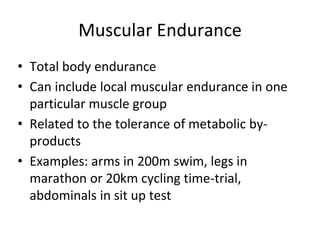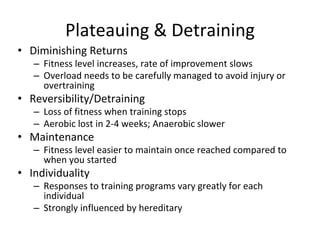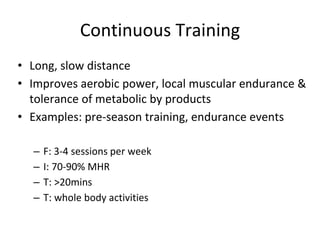This document discusses fitness components, tests, and training principles for physical fitness. It outlines the key health-related components of aerobic capacity, anaerobic capacity, muscular strength, muscular endurance, flexibility, and body composition. It also discusses skill-related components like speed, power, agility, coordination, balance, and reaction time. The document then covers important training principles such as specificity, intensity, duration and frequency, progressive overload and variety, plateauing and detraining. It concludes by outlining various training methods including continuous, interval, resistance, flexibility, plyometrics, circuit, fartlek, speed, and Swiss ball/core strength training.

































